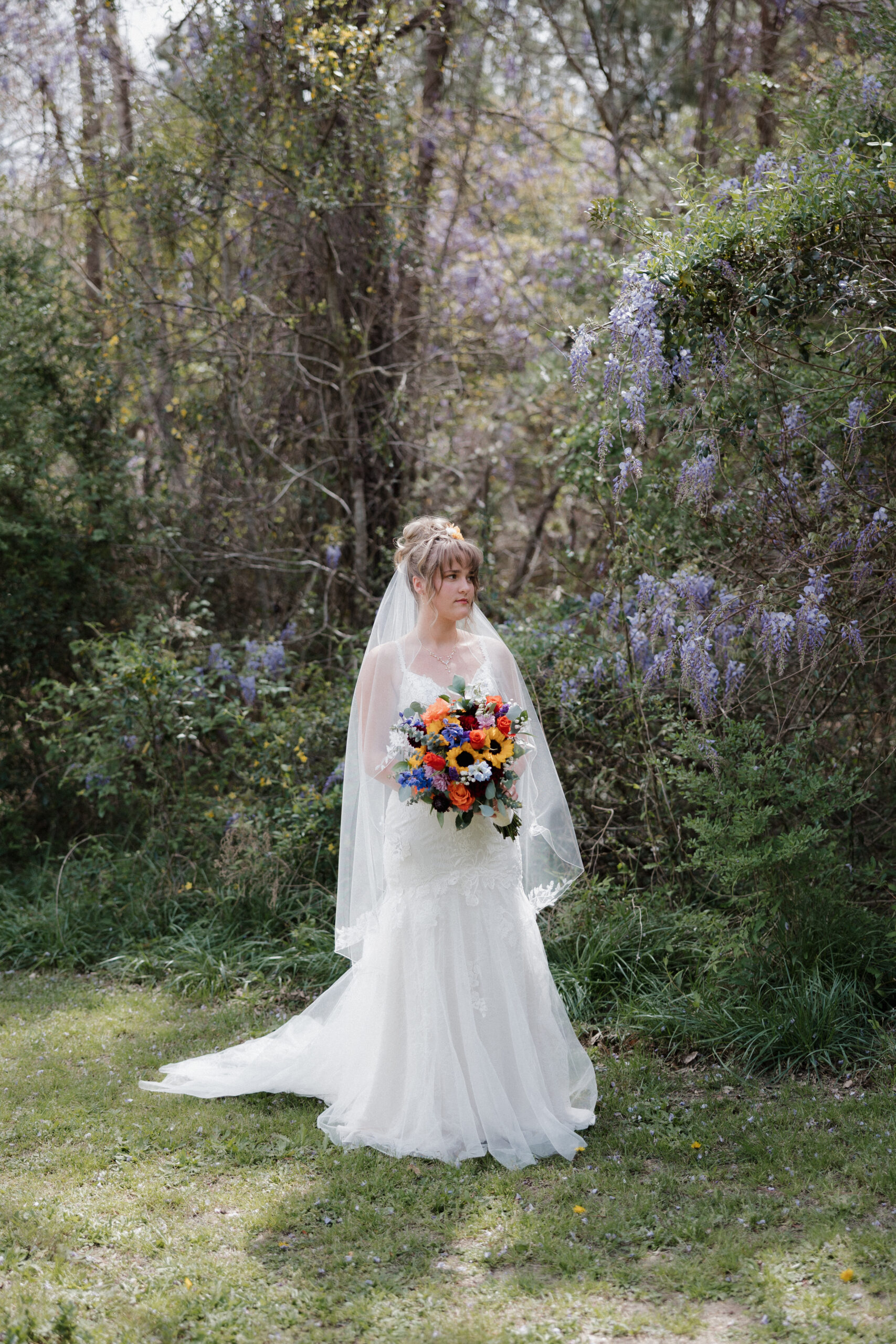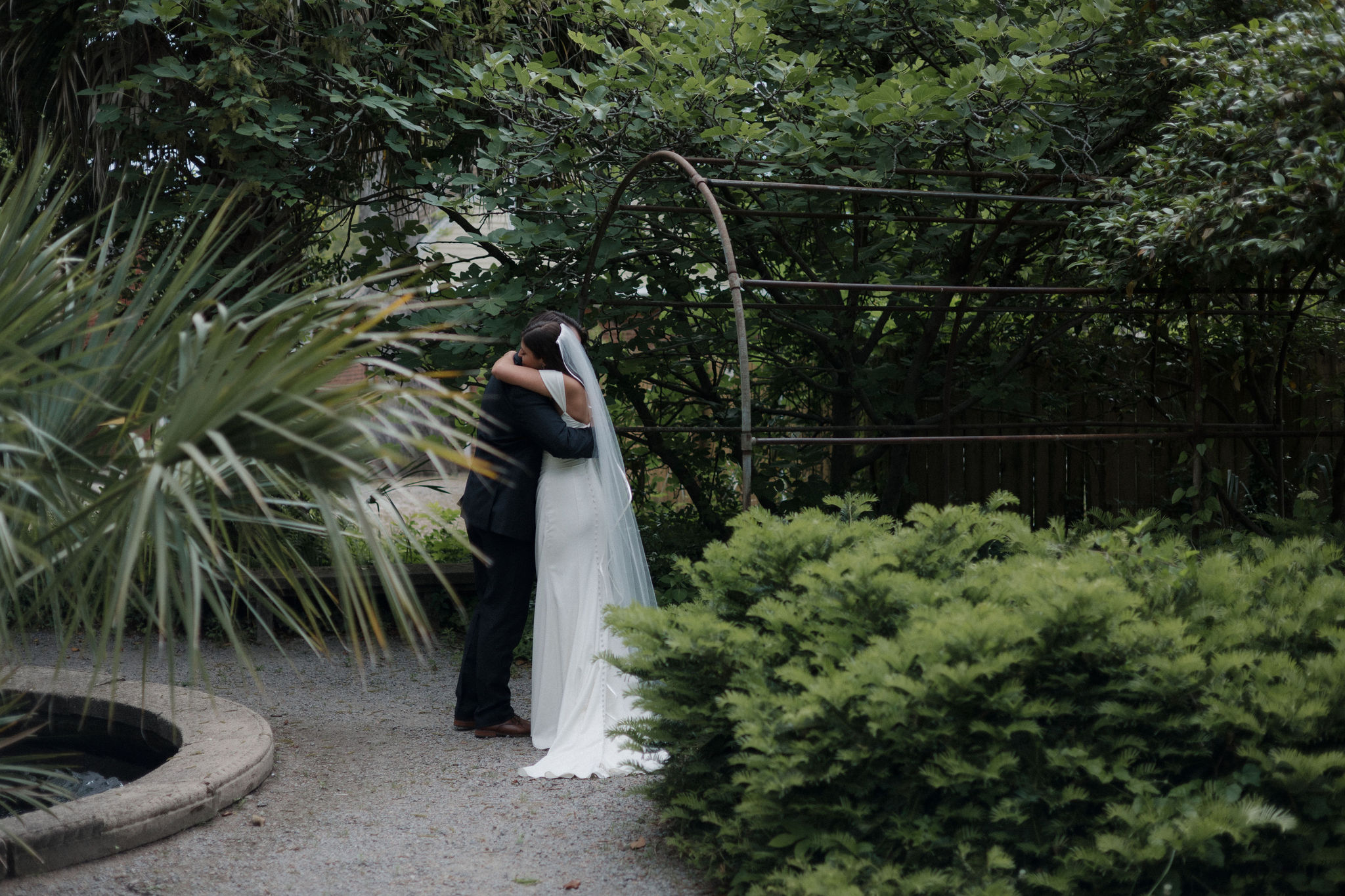Why Your Ceremony Time and Location Actually Matter (And How Your Photographer Can Help)
Weddings, Resources
Filed under:
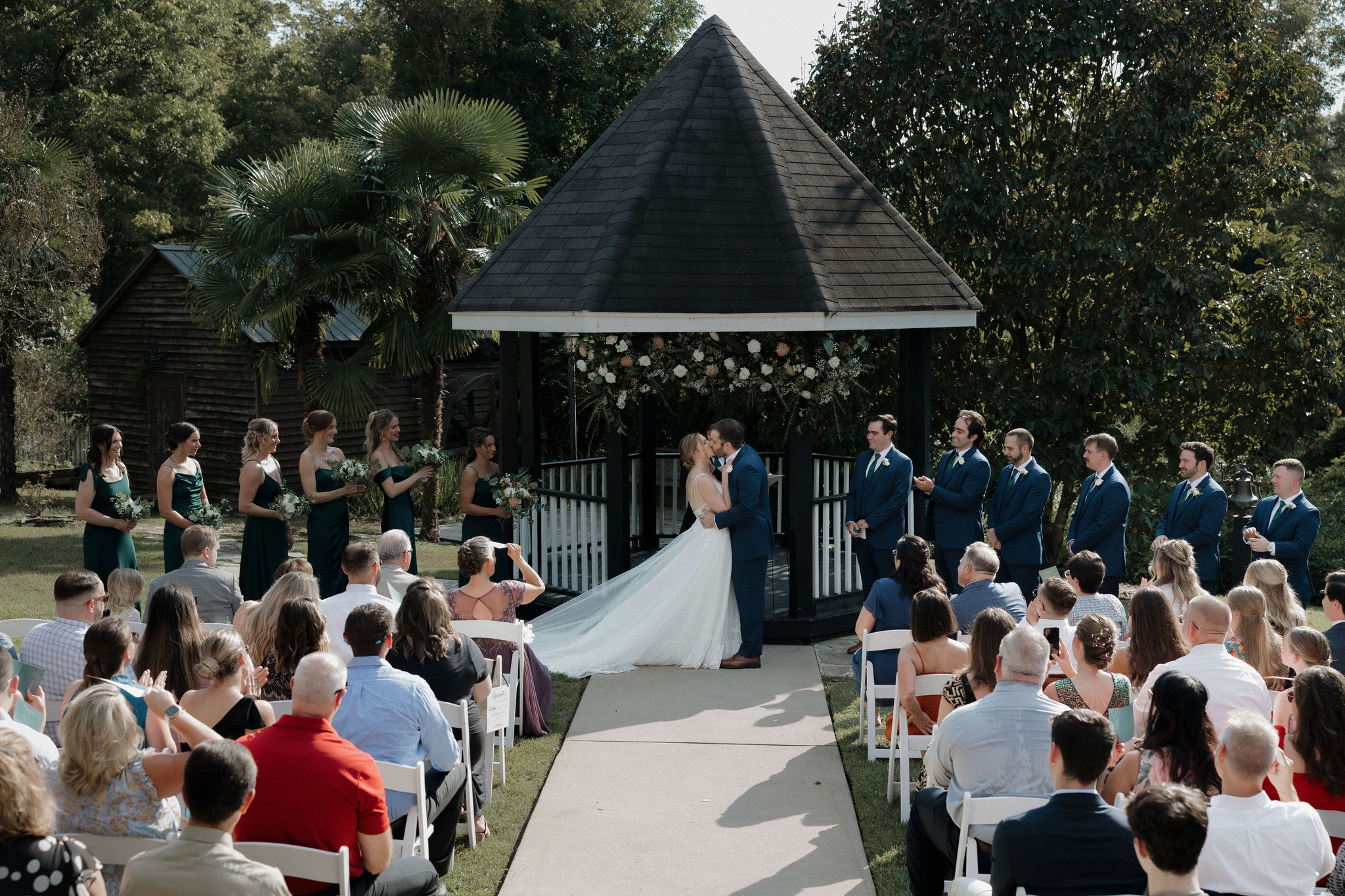
Why Your Ceremony Time and Location Actually Matter (And How Your Photographer Can Help)
Look, I get it—you’re not supposed to be a lighting expert. That’s our job. But here’s the thing: your ceremony time and location directly impact how you look in your photos, how comfortable you and your guests feel during the ceremony, and whether we’re scrambling for light afterward or calmly capturing beautiful moments.
After photographing South Carolina weddings, we’ve seen what works (and what makes everyone squint and sweat). The good news? A few simple decisions make all the difference.
The Magic Timing: At Least Two Hours Before Sunset

This is the one recommendation we give almost every couple: plan your ceremony at least two hours before sunset.
Here’s why:
- You get beautiful, flattering light without harsh midday sun
- You have buffer time if something runs late (something always runs a little late)
- You have flexibility if weather changes and it gets darker earlier
- You’re not rushed through post-ceremony photos
- You can actually relax and enjoy your day
If you’re doing a first look, we can work with a shorter timeframe since you’ll have already knocked out most of your portraits. But that two-hour buffer still gives you breathing room for delays, weather surprises, and a day that doesn’t feel frantic.
What Makes Ceremony Lighting Actually Work
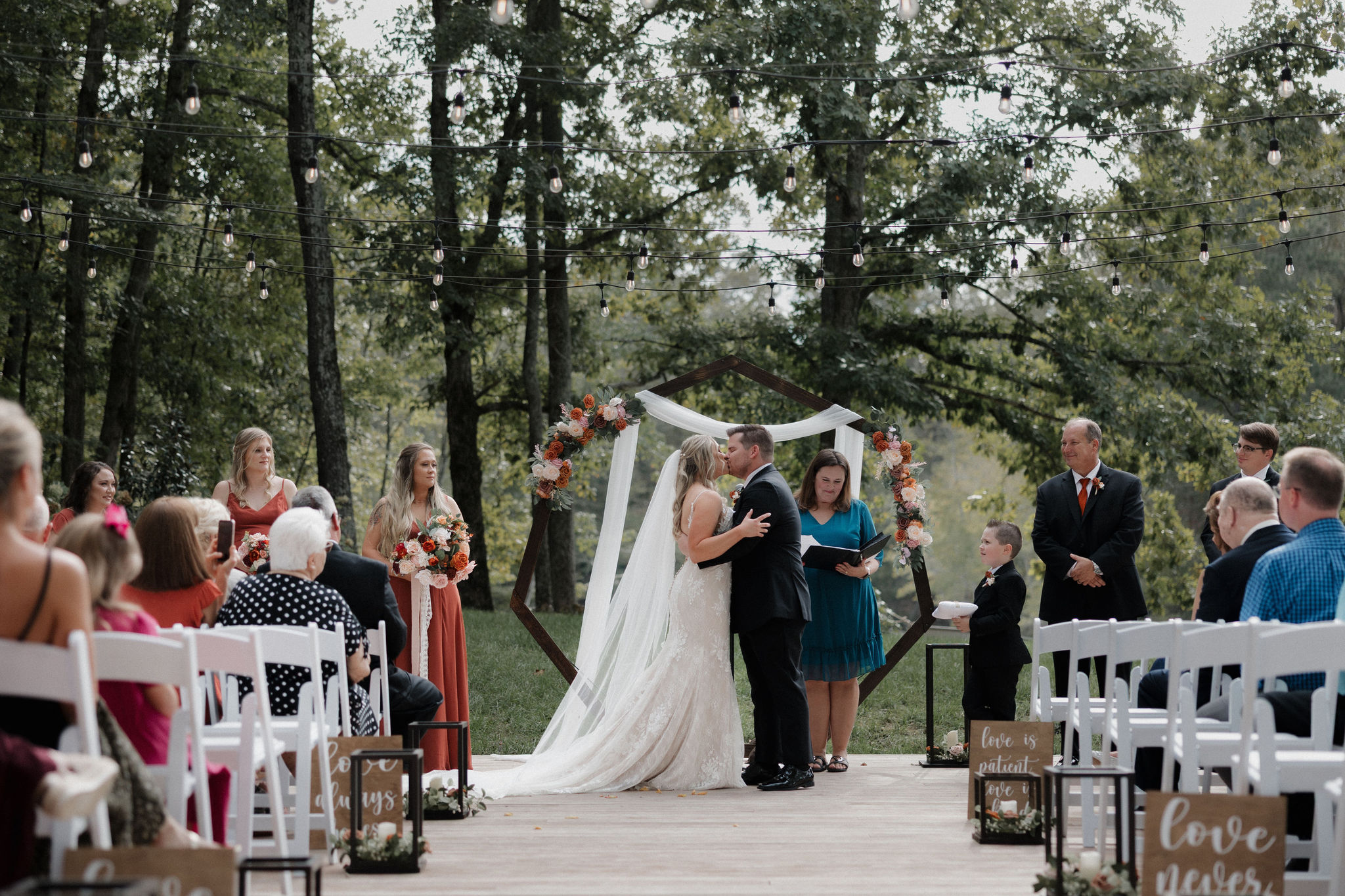
Lighting is Your Best Friend
The most flattering ceremony lighting? Backlighting—when the sun is setting behind you, not blasting you in the face. This creates that soft, glowy, romantic light everyone loves, especially during golden hour.
But backlighting isn’t your only option. Even shade works beautifully too. There are some great venues in Columbia, SC that have shaded ceremony locations with even, consistent lighting during most ceremony times. When shade is evenly distributed (not dappled or spotty), it creates soft, flattering light without harsh shadows.
Your venue coordinator usually knows their ceremony locations well and can tell you what’s shaded and where the sun is at certain times of day. They’re a great resource for figuring out what works best.
What Doesn’t Work As Well
Nine times out of ten, venues have a designated ceremony spot where the sun is directly facing the couple—or worse, hitting one side in full sun and leaving the other side in shade. This means:
- You’re squinting through your vows
- Your guests are squinting at you (or wearing sunglasses in your ceremony photos)
- One side of your wedding party is really bright while the other is in shadow
If you can choose your ceremony location (or time) to have the sun behind you or in even shade instead, everything improves dramatically.
Diffused Light Makes Everything Better
If you can choose a ceremony location where something softens the light—trees filtering it, fabric from a structure, anything that diffuses harsh sun—you’ll look better and feel more comfortable. Your guests won’t be staring directly into the sun, and you won’t be standing there squinting through the most important moment of your day.
Timing Changes Everything
Think about how different the sun feels at noon versus 6 PM during golden hour. Noon sun is harsh, bright, and creates hard shadows. Golden hour sun is soft, warm, and forgiving. If you have any control over your ceremony time, aim for later in the day when the sun is lower and softer.
The Timing Scenarios
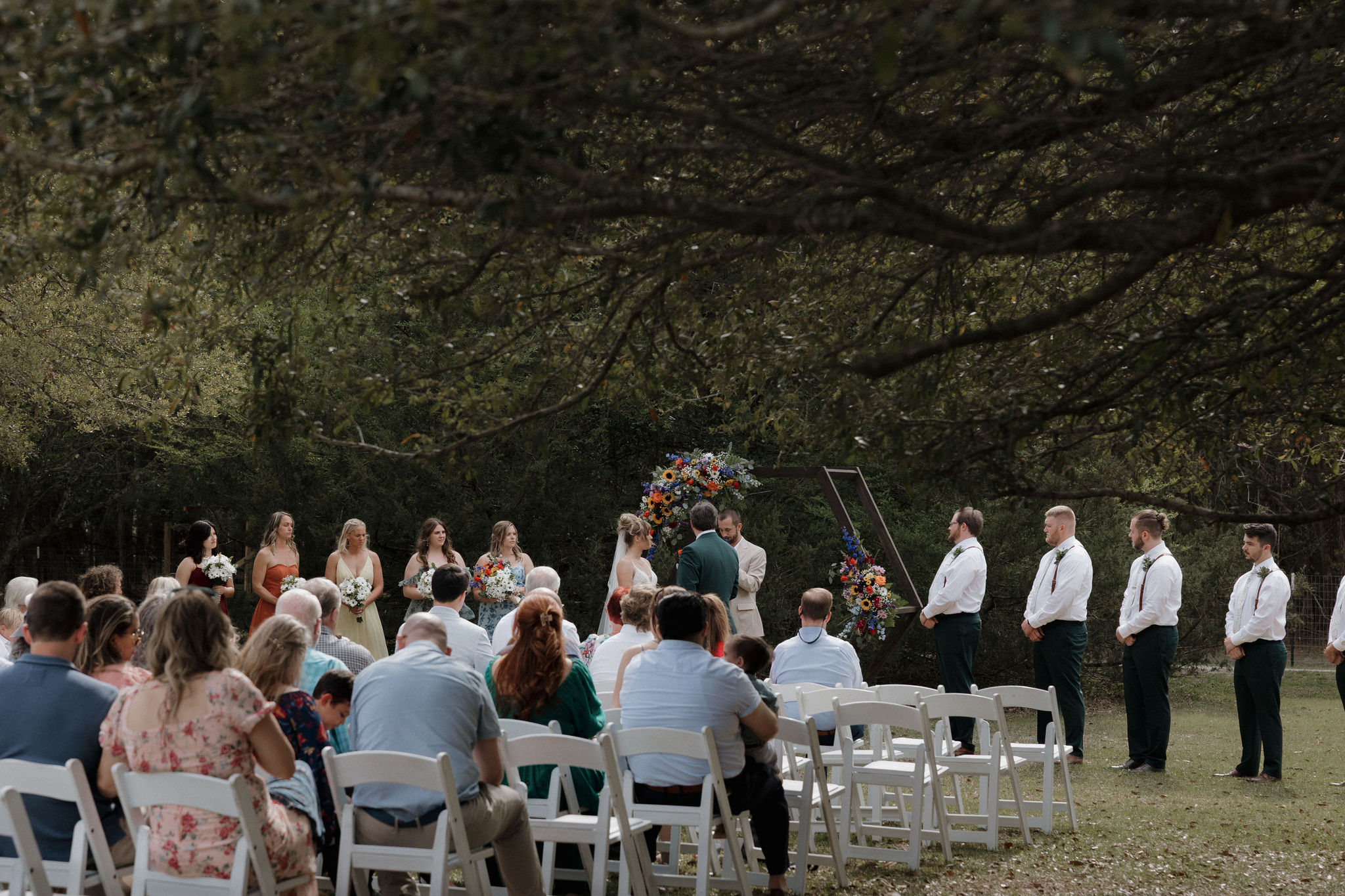
With a First Look
Schedule your ceremony at least 1.5 hours before sunset. This gives you wiggle room if things run late and allows us to grab a few golden hour photos right after the ceremony if you want them.
Without a First Look
You need at least 2 hours before sunset, sometimes 3 hours is preferable depending on your photography priorities. After your ceremony, you still need to do family portraits, wedding party photos, and couple portraits. If your ceremony ends close to sunset, you’re taking all those photos in fading light or near-darkness.
If You’re Planning a Ceremony After Sunset
Post-sunset ceremonies can be beautiful and intimate, but they require lighting. You’ll need to decide:
- Are you okay with flash during your ceremony? It’s effective but visible—bright bursts of light during your vows can be distracting.
- If not, you’ll need to consider hiring a professional lighting company to light your outdoor ceremony space. This isn’t just for photos—your guests need to see you too.
Post-sunset ceremonies also mean all your portraits happen beforehand, so you’ll need a first look and time built in for photos before guests arrive.
Looking at Real Weddings at Your Venue


Whether you’ve already booked your venue or you’re still deciding, it’s worth looking up real weddings at your venue during different times of day.
Look specifically at ceremonies that happened in bright daylight. Where is the sun hitting? Are people squinting? Does the lighting look harsh or soft? If it looks aggressive or uncomfortable, that’s what your ceremony could look like too.
Remember: you’re not just standing there for photos. You’re standing there for 20-30 minutes saying your vows. If the sun is blasting you in the face, that’s your experience—not just a photography problem.
Your venue coordinator usually knows their ceremony locations well and can tell you what’s shaded and where the sun is at certain times of day. Don’t hesitate to ask them for their recommendations!
How We Help


When you work with us, we help you:
- Build your photography timeline so you’re not rushed and have buffer time built in
- Give recommendations if you want them—especially if you’re torn between different ceremony sites at your venue
- Think through what ceremony time makes sense for your vision and priorities
Here’s the thing: some couples don’t necessarily care about dappled, uneven, or harsh lighting—and that’s totally okay! We just want your day to be as successful as possible and like to share the knowledge we have from photographing weddings. We’re there to photograph your day however you see fit, but we can absolutely help if you want guidance.
The Bottom Line
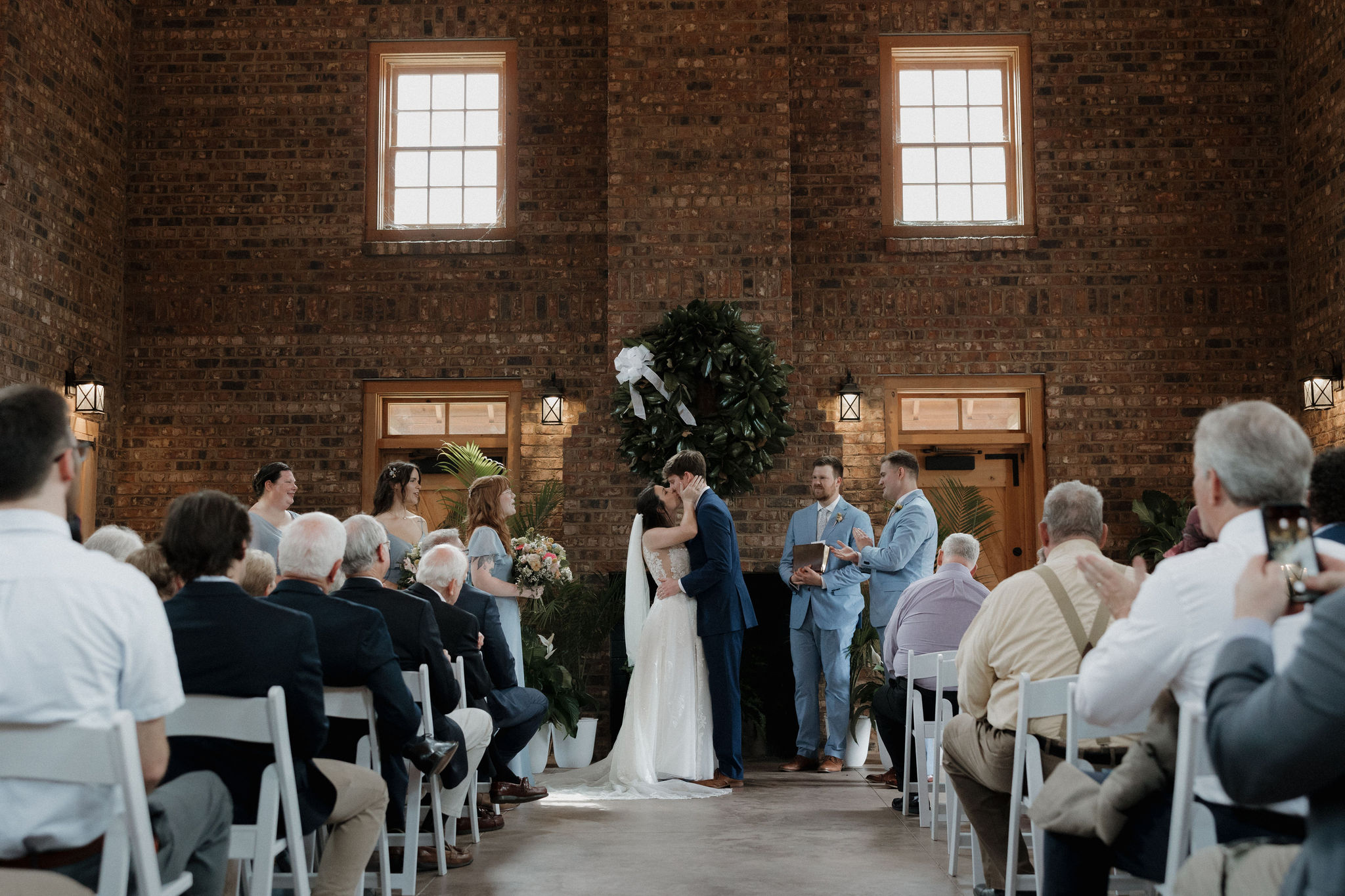
Your ceremony time and location aren’t just details to check off a list. They directly impact how you look in photos, how comfortable you feel during your ceremony, and how smoothly your day flows.
You don’t have to be a lighting expert—that’s our job. But knowing these basics while you’re planning can save you from squinting through your vows, scrambling for light afterward, or ending up with photos that don’t match your vision.
Talk to us early. Send us your venue ceremony options. Let us help you think through timing. We want your day to be beautiful AND stress-free—and that starts with getting ceremony timing and location right.
Planning your South Carolina wedding and want help figuring out ceremony timing and location? Let’s talk through your venue and vision so we can set you up for beautiful photos and a comfortable, relaxed ceremony experience.
So let's tell it right.
your story is worth telling
stories
Featured
We're not here to make you fit a mold.
We're here to break it with you.
I'm Samantha, the dreamer behind the lens, the one asking "but how did that make you feel?" and probably overthinking your photo timeline (in the best way). I'm driven by the process: the storytelling, the editing, and that magical energy that happens when people feel safe enough to be themselves.
Brady's my other half in life and in business, the people person who makes friends with your entire wedding party and catches those in-between shots no one else saw. While I'm crafting the vision, he's reading the room and making sure everyone feels at ease.
A married Columbia, South Carolina photography duo
